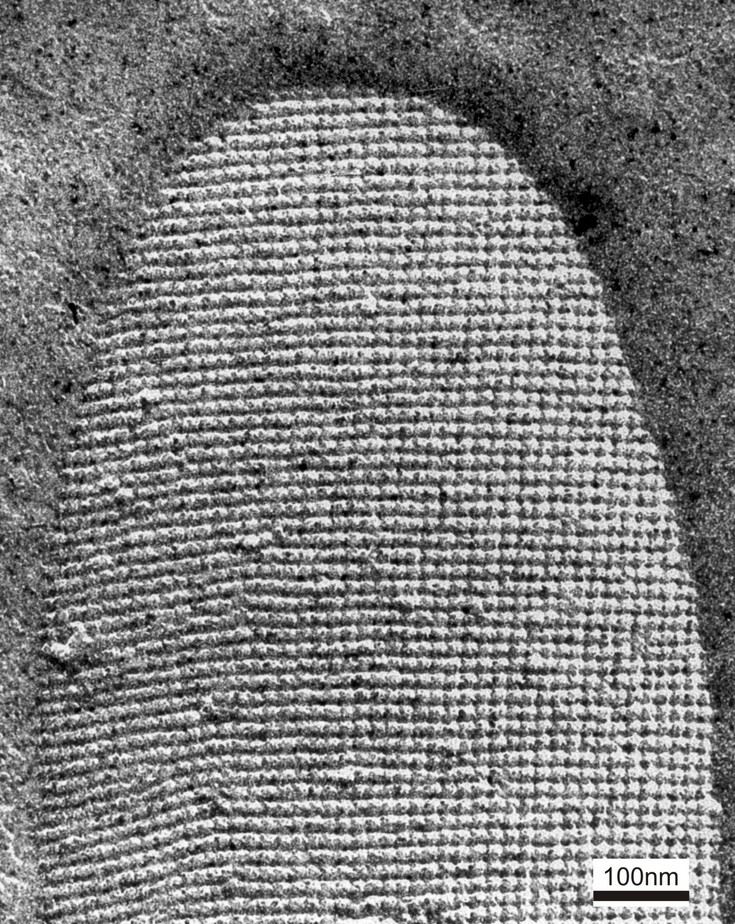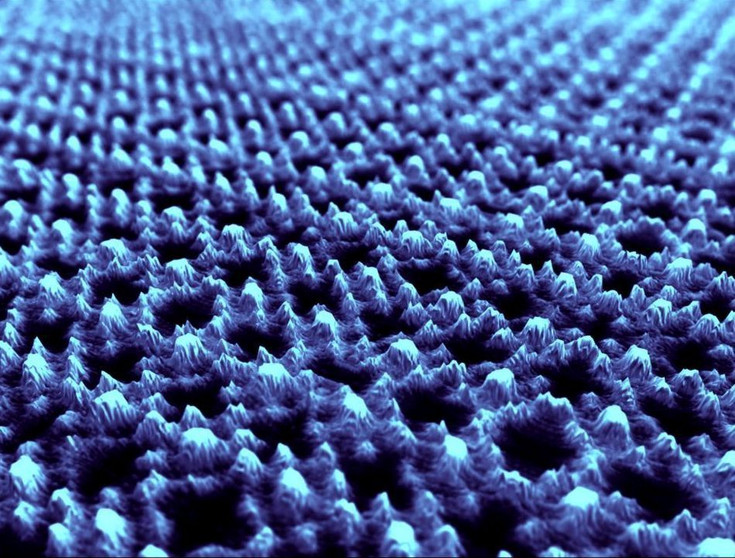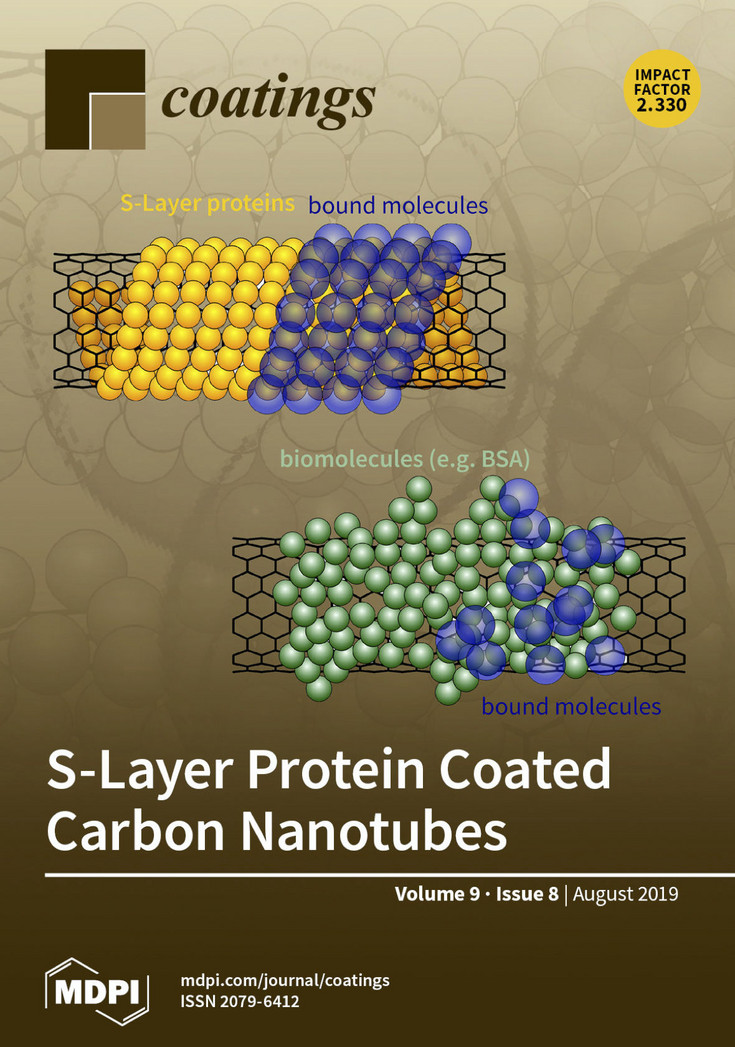S-layers
Bacterial S(surface) layers are ordered protein layers that form the outermost cell wall component of many bacteria and archaea. S-layers consist of single protein or glycoprotein species and represent the simplest biological membranes developed during evolution. S-layers are highly porous protein lattices with unit cells between 3 and 30 nm in size and pores between 2 and 8 nm. S-layers are generally between 5 and 20 nm thick (archaea up to 70 nm). S-layer proteins are among the most abundant biopolymers on earth. Isolated and purified native as well as recombinantly produced S-layer proteins form self-assembled mono- or double layers in solution as well as on solid supports, at the water-air interface, on lipid films, liposomes, nanocapsules and nanoparticles. Self-organisation is entropy-driven and a fascinating example of matrix assembly, which takes place in a multi-stage, non-classical process in which protein folding is directly linked to self-assembly into ordered structures. This also applies to S-layer fusion proteins, which after recrystallization present the functionality of the fusion partner as an ordered matrix. In this way, tailor-made functional proteins can be produced.
Open-ended basic research on the structure, synthesis, genetics, self-organisation and function of S-layer proteins paved the way for their application in biotechnology, biomimetics, synthetic biology and nanotechnology.
References
- Pum, D., Breitwieser, A., Sleytr, U.B. Patterns in Nature - S-Layer Lattices of Bacterial and Archaeal Cells. Crystals 2021, 11, 869.
- Sleytr, U.B., Schuster, B., Egelseer, E.M., Pum, D. S-layers: Principles and Applications. FEMS Microbiology Review 2014, 38, 823-864.
- Pum, D., Sleytr, U.B. Reassembly of S-layer proteins. Nanotechnology 2014, 25, 312001.

TEM micrograph of an S-layer carrying bacterial cell

AFM image of an S-layer on a silicon wafer
S-layer and carbon nanotube construction kit
Carbon nanotubes (CNTs) are cylindrical nanostructures that are composed purely of carbon atoms. Due to their outstanding mechanical and electrical properties and thermal conductivity, CNTs are already used as additives in new materials. Recently, CNTs have also been used for medical applications as they can penetrate cells and tissues due to their small diameter. Since CNTs are chemically inert and do not dissolve in water, for example, their surface must be adapted chemically or by binding biomolecules in order to be loaded with further molecules or to interact with their environment. Proteins are preferred because they are biocompatible and offer functional groups for further binding. However, the proteins - and thus their functional groups - are usually only irregularly bound on the CNT surface and also not tightly.
S-layer proteins, which have long been used for the modification of surfaces in nanobiotechnology, offer an alternative to the functionalisation of CNTs with closed and highly ordered protein layers.
The aim of the project is to investigate the recrystallisation of S-layer proteins on carbon nanotubes and to apply the findings to the production of novel materials, e.g. for biosensors. The key to this lies in the properties of the S-layer proteins themselves, which allow highly specific functionalization of the CNT surface. Furthermore, novel hybrid structures, such as containers for the transport of active substances, are to be developed on the basis of the biomineralisation of S-layers.
These examples of a construction kit consisting of S-layers and carbon tubes show that this project can lead to a new technology for the biological functionalization of carbon tubes.
Acknowledgements
Funded by the Austrian Science Fund (FWF) [P 31927-N28].
References
- Breitwieser, A., Sleytr, U.B., Pum, D. A New Method for Dispersing Pristine Carbon Nanotubes Using Regularly Arranged S-Layer Proteins. Nanomaterials 2021, 11, 1346.
- Breitwieser, A., Siedlaczek, P., Lichtenegger, H., Sleytr, U.B., Pum, D. S-Layer Protein Coated Carbon Nanotubes. Coatings 2019, 9, 492.

Schematic representation of precisely arranged S-layer proteins (orange) on the CNT surface. Further biomolecules (blue) are tightly bound on the S-layer lattice. In contrast, many biomolecules, such as BSA (green), only arrange themselves in disorder, which is why other molecules (blue) are also bound irregularly.
